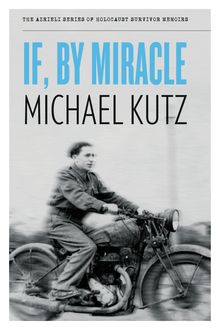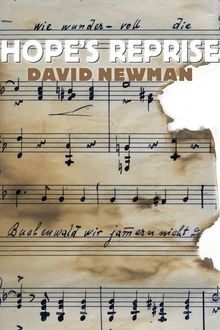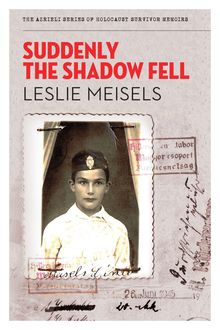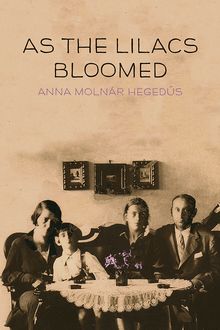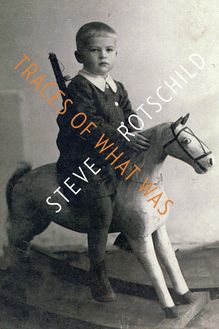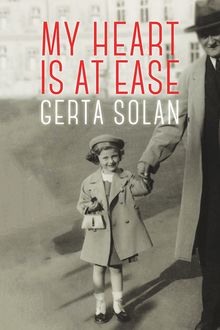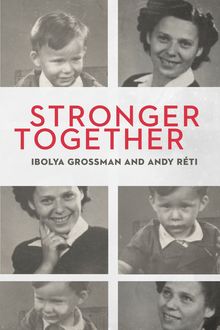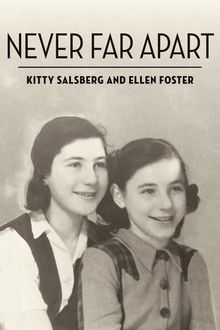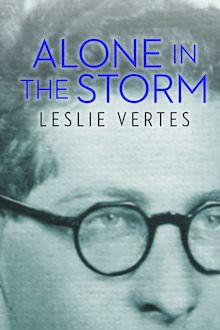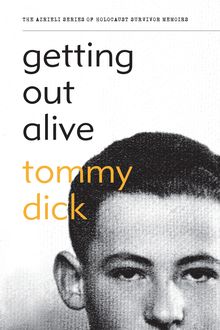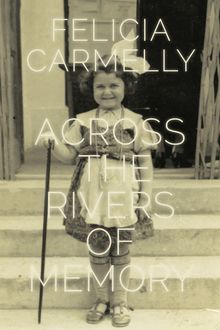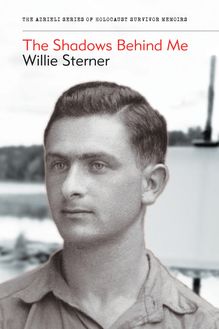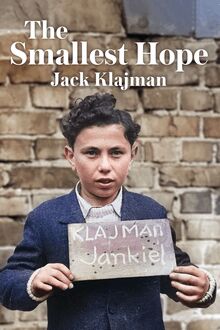Inside the Walls , livre ebook
70
pages
English
Ebooks
2016
Vous pourrez modifier la taille du texte de cet ouvrage
Obtenez un accès à la bibliothèque pour le consulter en ligne En savoir plus
Découvre YouScribe en t'inscrivant gratuitement
Découvre YouScribe en t'inscrivant gratuitement
70
pages
English
Ebooks
2016
Vous pourrez modifier la taille du texte de cet ouvrage
Obtenez un accès à la bibliothèque pour le consulter en ligne En savoir plus
Publié par
Date de parution
30 mai 2016
Nombre de lectures
2
EAN13
9781988065205
Langue
English
Poids de l'ouvrage
2 Mo
Publié par
Date de parution
30 mai 2016
Nombre de lectures
2
EAN13
9781988065205
Langue
English
Poids de l'ouvrage
2 Mo
Inside the Walls
Eddie Klein
The Azrieli Series of Holocaust Survivor Memoirs
Naomi Azrieli, Publisher
Jody Spiegel, Program Director
Arielle Berger, Managing Editor
Farla Klaiman, Editor
Elizabeth Lasserre, Senior Editor, French-Language Editions
Elin Beaumont, Senior Educational Outreach and Events Coordinator
Catherine Person, Educational Outreach and Events Coordinator, Quebec and French Canada
Marc-Olivier Cloutier, Educational Outreach and Events Assistant, Quebec and French Canada
Tim MacKay, Digital Platform Manager
Elizabeth Banks, Digital Asset and Curator Archivist
Susan Roitman, Office Manager (Toronto)
Mary Mellas, Executive Assistant and Human Resources (Montreal)
Mark Goldstein, Art Director
François Blanc, Cartographer
Bruno Paradis, Layout, French-Language Editions
Contents
The Azrieli Series of Holocaust Survivor Memoirs
Series Preface: In their own words...
About the Glossary
Introduction
Map
Dedication
Author’s Preface
Flowing Currents
Poetry and Protection
The Runner
Landscape of Death
A Touch of Levity
Instruments of Survival
Epilogue
Glossary
Photographs
Copyright
About the Azrieli Foundation
Also Available
Series Preface: In their own words...
In telling these stories, the writers have liberated themselves. For so many years we did not speak about it, even when we became free people living in a free society. Now, when at last we are writing about what happened to us in this dark period of history, knowing that our stories will be read and live on, it is possible for us to feel truly free. These unique historical documents put a face on what was lost, and allow readers to grasp the enormity of what happened to six million Jews – one story at a time.
David J. Azrieli, C.M., C.Q., M.Arch
Holocaust survivor and founder, The Azrieli Foundation
Since the end of World War II , over 30,000 Jewish Holocaust survivors have immigrated to Canada. Who they are, where they came from, what they experienced and how they built new lives for themselves and their families are important parts of our Canadian heritage. The Azrieli Foundation’s Holocaust Survivor Memoirs Program was established to preserve and share the memoirs written by those who survived the twentieth-century Nazi genocide of the Jews of Europe and later made their way to Canada. The program is guided by the conviction that each survivor of the Holocaust has a remarkable story to tell, and that such stories play an important role in education about tolerance and diversity.
Millions of individual stories are lost to us forever. By preserving the stories written by survivors and making them widely available to a broad audience, the Azrieli Foundation’s Holocaust Survivor Memoirs Program seeks to sustain the memory of all those who perished at the hands of hatred, abetted by indifference and apathy. The personal accounts of those who survived against all odds are as different as the people who wrote them, but all demonstrate the courage, strength, wit and luck that it took to prevail and survive in such terrible adversity. The memoirs are also moving tributes to people – strangers and friends – who risked their lives to help others, and who, through acts of kindness and decency in the darkest of moments, frequently helped the persecuted maintain faith in humanity and courage to endure. These accounts offer inspiration to all, as does the survivors’ desire to share their experiences so that new generations can learn from them.
The Holocaust Survivor Memoirs Program collects, archives and publishes these distinctive records and the print editions are available free of charge to educational institutions and Holocaust-education programs across Canada. They are also available for sale to the general public at bookstores. All revenues to the Azrieli Foundation from the sales of the Azrieli Series of Holocaust Survivor Memoirs go toward the publishing and educational work of the memoirs program.
•
The Azrieli Foundation would like to express appreciation to the following people for their invaluable efforts in producing this book: Doris Bergen, Rita Briansky, Sherry Dodson (Maracle Press), Paul Green, Therese Parent, Robert Shapiro, and Margie Wolfe & Emma Rodgers of Second Story Press.
About the Glossary
The following memoir contains a number of terms, concepts and historical references that may be unfamiliar to the reader. For information on major organizations; significant historical events and people; geographical locations; religious and cultural terms; and foreign-language words and expressions that will help give context and background to the events described in the text, please see the Glossary .
Introduction
Walking through the woods near contemporary Lodz, Poland, along the green paths cut off from the city, it is possible to imagine the original landscape of the once small, medieval, agricultural village previously under the control of the bishops of Włocławek. In the nineteenth century, this landscape was transformed into an industrial centre with extensive factories, industrial sites and an ethnically diverse population. During World War II , the Nazi regime reshaped the city of Lodz still more, remodelling it into a German city to be incorporated into the Reich, complete with a new German name: Litzmannstadt. In keeping with Nazi ideology, the Germans sought to expel Lodz’s Jews from the city and to colonize it with ethnic Germans from the Soviet Union and the German Rei ch in their stead. The city’s Jews were forced into the Lodz ghetto – the first major ghetto to be established and, after Warsaw, the second largest ghetto of Nazi-occupied Europe. The “Germanization” (and Aryanization) of the urban landscape entailed demolishing the synagogues of Lodz to erase the physical monuments to Jewish life in the city. Jewish homes seized by the Nazis were handed over to German families. Longer-term Nazi urban planning envisioned razing the ghetto and transforming it into a park, a plan expressed in a wartime map but never carried out. The Nazis tried to erase all traces of the Jews of the Lodz ghetto. However, despite their efforts, there were those who survived and testified about their experiences. This memoir brings to life the story of a man, Eddie Klein, whom the Nazis wished not only to kill, but also to erase from memory. Remarkably, he survived to tell his story.
Klein was born and raised in Sieradz, Poland, an old town on the Warta River, rich in history. Kazimierz the Great, the last king of the Piast dynasty, who is remembered by Jews as a protector of their rights, built a castle in Sieradz. Between the thirteenth and fifteenth centuries it hosted numerous meetings of the Polish Sejm, an assembly of Polish nobles enjoying powers that included selecting the king of Poland. By the end of World War I , a vibrant Jewish community had established itself in Sieradz, where Jews worked as artisans, shopkeepers, merchants and in other professions.
Just before World War II , there were approximately 5,000 Jews (approximately 40 per cent of the town’s population) living in Sieradz. The German army invaded Poland on September 1, 1939, and by September 3, 1939, they had arrived in Sieradz. The Germans were brutal in their treatment of the Jews there and a number of Jews fled the town. Among them were Eddie Klein and his family, who fled to Lodz, a large city about seventy kilometres away, which they perceived to be a safer place to be during the war.
The Kleins moved to a building on the main street of Lodz, at Piotrkowska 82 (later renamed “Adolf Hitler Strasse” by the Nazis). Piotrkowska Street was aesthetically a gem, an architecturally sophisticated and beautiful street featuring upscale shops and well-appointed apartments far different from the industrialized landscape of much of the city. It was precisely this sort of prime real estate that the Nazis coveted for the German citizens they were moving into the occupied city. Like every other Jewish family on Piotrkowska (and later through the entire city), the Klein family was forced out of their apartment into an unheated room in the ghetto, which was the most effectively closed ghetto of Nazi-occupied Europe. Surrounded by barbed wire, it had only one main entrance, making smuggling or escape nearly impossible.
With the sealing of the Lodz ghetto in May 1940, the Nazis demanded the Jews keep it in order. Mordechai Chaim Rumkowski, a former orphanage director and one of the last remaining members of the pre-war Jewish leadership, who was appointed Judenälteste (Eldest of the Jews) in Lodz by the Nazi administration in October 1939, was assigned responsibility for the ghetto’s order, labour and food distribution. With a population of 160,000, this was an enormous responsibility. To coordinate and oversee the everyday functioning of the ghetto, Rumkowski and those he appointed created a large network of departments. Like Rumkowski and his family, those heading the various departments were an elite group with special privileges and access to goods in the ghetto not enjoyed by the majority of its inmates, who were impoverished and starving.
In the summer of 1940, only months after the ghetto was sealed, the Germans sought to “draw out” the wealth of its Jewish population by forcing them to exchange their valuables (furs, jewellery, money) for foodstuffs. This was a shallow well, however, and by August 1940, many had no more valuables to trade for food, and only 52 per cent of ghetto inhabitants had the means to purchase rations. Consequently, large numbers of Jews began dying of starvation. The Jewish leadership scrambled to find other ways to get food to the starving ghetto populace and eventually proposed t
